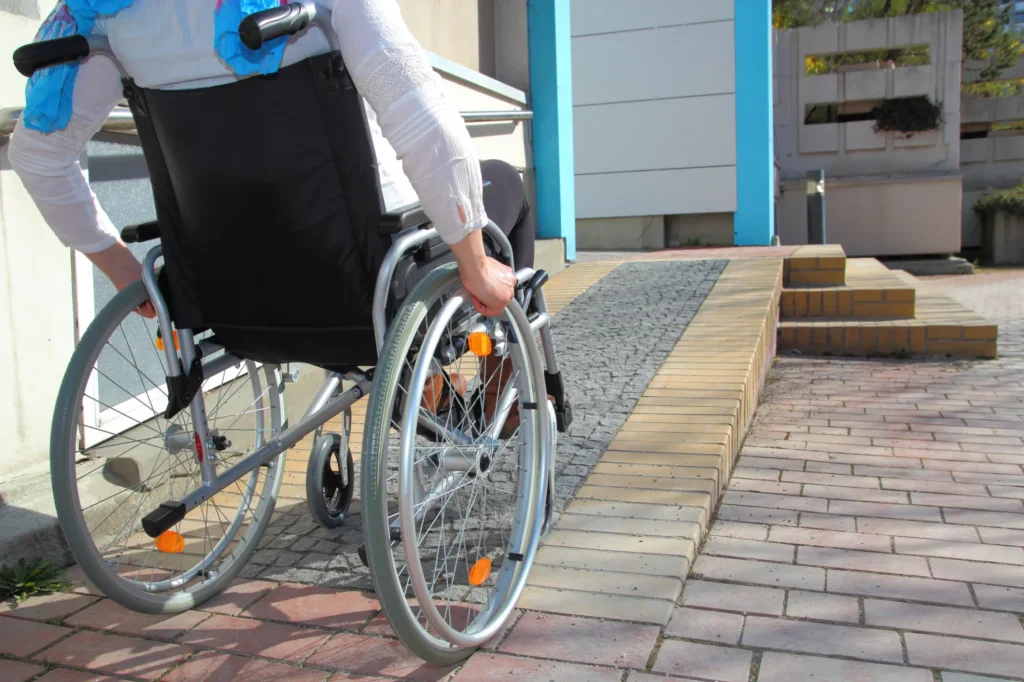When should I start home modification preparation?

For most of us, home modification planning is often something we think about once it’s too late.
Too many Australians delay home modification planning until they absolutely need it, leading to challenges and often big expenditures that can incur in the blink of an eye after an accident or a fall.
Now, housing developers and builders are considering the need for future planning when designing and constructing new homes – opting to invest in livable housing with bigger doorways, corridors and showers to accommodate mobility aids and shower chairs.
But for Managing Director of Home Care Nurses Australia, Busi Faulkner, home modification planning was something that never crossed her mind until she suffered a shock heart attack 11 years ago at just 33 years old. Suddenly, she was unable to navigate her home easily and do the things she used to while still caring for two young children.
Now 44, having worked in the home care industry for over a decade, Ms Faulkner said the one common denominator for her clients who get to stay at home is modification preparedness.
“Some people may look at their home and think, ‘It’s only two steps’ but two steps make a huge difference to someone who’s not well. Yes, we all want to be healthy but once you’re ill, it can be traumatic and impossible to navigate.”
Whether it’s the need for wheelchair accessibility, safety features, or ergonomic designs, early planning ensures that your home remains a comfortable and safe space.
So, here are Ms Faulkner’s top points for home modification planning.
Anticipate changing needs
Life is ever-changing and our needs evolve. By planning home modifications, you can anticipate what needs to be done to accommodate those changes.
“I think most people get caught out and then when they have to do it, it’s too late because these home modifications take a long time to complete – you need a builder and sometimes you need permits depending on what you need doing,” Ms Faulkner explained.
“Always have a bedroom downstairs because not everyone can have an elevator. If there’s a big shower, at least you can get a chair in there and shower yourself – it just preserves your independence and allows you to stay in your home longer.”
It doesn’t mean you need to have safety railings or ramps installed straight away but plan so that there is space to do so in the future.
Preserve independence
One of the primary goals of home modification planning is to maintain independence.
In the event of a debilitating accident, some people are displaced and unable to be discharged from the hospital if their homes are not suitable to reside in. This can result in a residential care placement, something we usually only associate with old age.
By being proactive about early home modification, you can help take some of the pressure off of hospitals and institutional care facilities while being able to age, rest and heal well in your own home – the preference among most Australians.
Reduce stress and cost
Home modifications can be a substantial financial investment and a stressful time when urgent, last-minute modifications are needed. These can be costly and disruptive.
By tackling the process early, you can spread the cost over time, making it more manageable.
For Ms Faulkner who owned a home on a hill with stairs, she needed to find another home after her heart attack. But renovations still needed to be done, totalling a minimum of $300,000.
She added that when accidents happen, “You often lose your income so you don’t have that extra money to modify quickly – you’ve got to work with what you’ve got.”
Create a safe and comfortable environment
Our homes are our sanctuaries – a place where you should feel comfortable and at ease.
With your unique needs, your living spaces should allow for customisable solutions and modifications to accurately fit those needs while also being in harmony with the existing home design.
This can reduce the risk of accidents and injuries, promoting long-term well-being.
One of Ms Faulkner’s former clients posed as an unfortunate example of how delayed home modification impacts individuals and their families.
“I went to someone’s house and the home had stairs. The person didn’t want to leave their house and they decided they were going to live in the living and dining room,” she explained.
“The wife absolutely hated them living there because it was no longer a home. Then, they were trying to get the Occupational Therapist to fix things and unfortunately, the person died before they could even sort it out.
View all news





